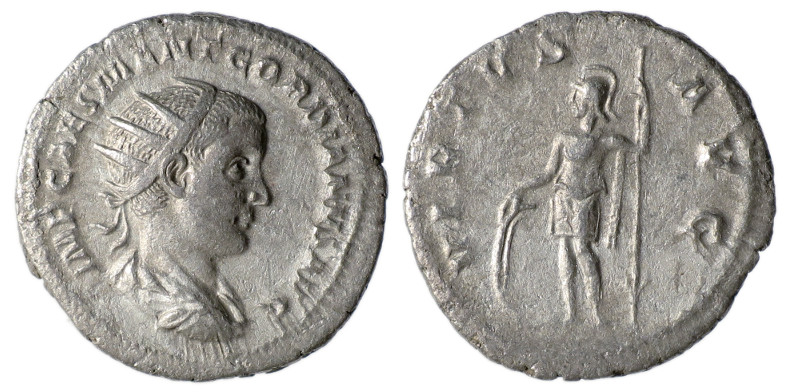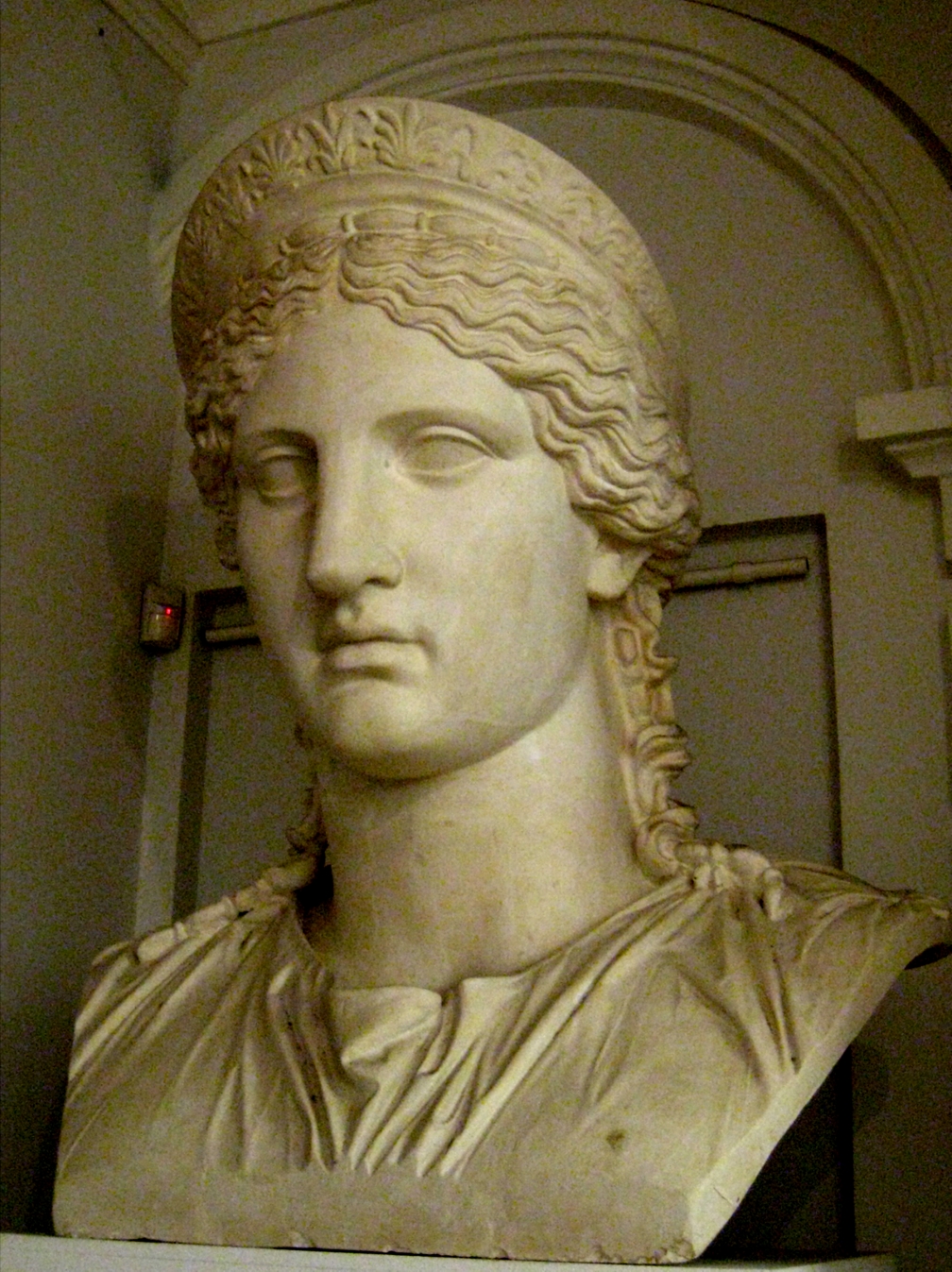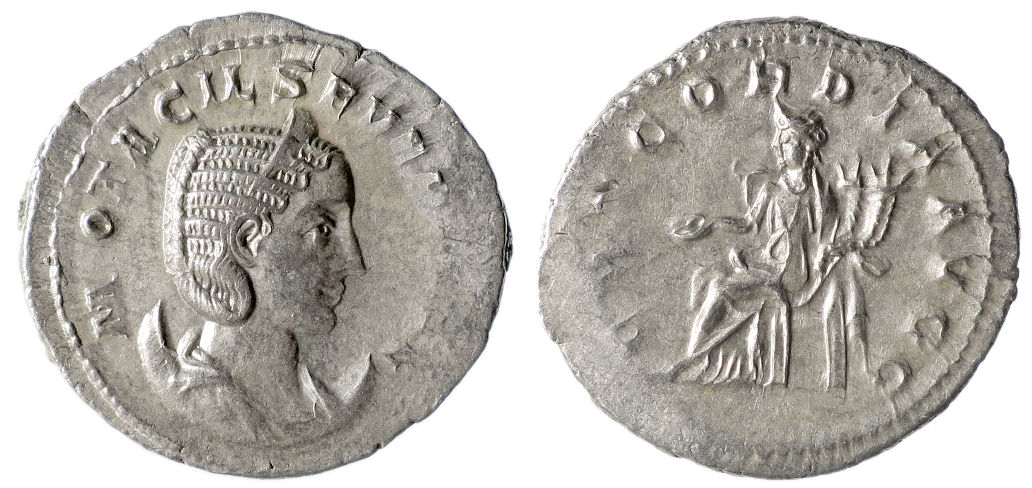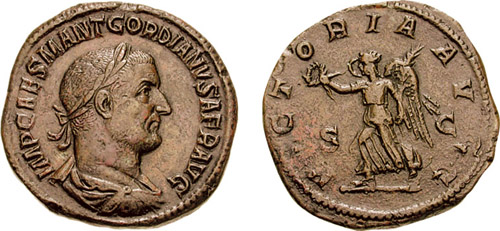|
Tranquillina
Furia Sabinia Tranquillina (c. 225 – aft. 244 AD) was the Empress of Rome and wife of Emperor Gordian III. She was the young daughter of the Praetorian Prefect Timesitheus by an unknown wife. In 241 AD her father was appointed the head of the Praetorian Guard by the Roman Emperor Gordian III Gordian III ( la, Marcus Antonius Gordianus; 20 January 225 – February 244) was Roman emperor from 238 to 244. At the age of 13, he became the youngest sole emperor up to that point (until Valentinian II in 375). Gordian was the son of Anto .... In May that year, Tranquillina had married Gordian. She became a Roman Empress and received the honorific title of '' Augusta''. Her marriage to Gordian was an admission by the young emperor of both Timesitheus' political indispensability and Tranquillina's suitability as an empress. Family tree Sources * ''Prosopographia Imperii Romani'' (PIR) ² F 587 References External links * http://www.wildwinds.com/coins/ric/tranquill ... [...More Info...] [...Related Items...] OR: [Wikipedia] [Google] [Baidu] |
Gaius Furius Sabinius Aquila Timesitheus
Gaius Furius Sabinius Aquila Timesitheus ( Greek: Τιμησίθεος) (AD 190-243) was an officer of the Roman Imperial government in the first half of the 3rd century. Most likely of Oriental-Greek origins, he was a Roman citizen, probably of equestrian rank. He began his career in the Imperial Service as the commander of a cohort of auxiliary infantry and rose to become Praetorian Prefect, the highest office in the Imperial hierarchy, with both civilian and military functions. His official life was spent mainly in fiscal postings and he typified the powerful procuratorial functionaries who came to dominate the Imperial government in the second quarter of the Third Century. Although he was on several occasions appointed to positions that contemporary Administrative Law reserved for officials of senatorial rank, he remained an equestrian until his death; it is possible that he deliberately avoided adlection to the Roman Senate, preferring to exercise power in offices from whi ... [...More Info...] [...Related Items...] OR: [Wikipedia] [Google] [Baidu] |
List Of Roman Empresses
This is a list of Roman and Byzantine empresses. A Roman empress was a woman who was the wife of a Roman emperor, the ruler of the Roman Empire. The Romans had no single term for the position: Latin and Greek titles such as '' augusta'' (Greek αὐγούστα, ''augoústa'', the female form of the honorific ''augustus'', a title derived from the name of the first emperor, Augustus), ''caesarea'' (Greek καισᾰ́ρειᾰ, ''kaisáreia'', the female form of the honorific ''caesar'', a title derived from the name of Julius Caesar), βᾰσῐ́λῐσσᾰ (''basílissa'', the female form of ''basileus''), and ''αὐτοκράτειρα'' (''autokráteira,'' Latin ''autocratrix'', the female form of autocrator), were all used. In the third century, ''augustae'' could also receive the titles of ''māter castrōrum'' "mother of the castra" and ''māter patriae'' "mother of the fatherland". Another title of the Byzantine empresses was εὐσεβέστᾰτη αὐγού� ... [...More Info...] [...Related Items...] OR: [Wikipedia] [Google] [Baidu] |
Gordian III
Gordian III ( la, Marcus Antonius Gordianus; 20 January 225 – February 244) was Roman emperor from 238 to 244. At the age of 13, he became the youngest sole emperor up to that point (until Valentinian II in 375). Gordian was the son of Antonia Gordiana and Junius Balbus, who died before 238. Antonia Gordiana was the daughter of Emperor Gordian I and younger sister of Emperor Gordian II. Very little is known of his early life before his acclamation. Gordian had assumed the name of his maternal grandfather in 238. Rise to power In 235, following the murder of Emperor Alexander Severus in Moguntiacum (modern Mainz), the capital of the Roman province Germania Superior, Maximinus Thrax was acclaimed emperor. In the following years, there was a growing opposition against Maximinus in the Roman Senate and amongst the majority of the population of Rome. In 238, a rebellion broke out in the Africa Province, where Gordian's grandfather and uncle, Gordian I and II, were proclaim ... [...More Info...] [...Related Items...] OR: [Wikipedia] [Google] [Baidu] |
Empress Of Rome
This is a list of Roman and Byzantine empresses. A Roman empress was a woman who was the wife of a Roman emperor, the ruler of the Roman Empire. The Romans had no single term for the position: Latin and Greek titles such as '' augusta'' (Greek αὐγούστα, ''augoústa'', the female form of the honorific ''augustus'', a title derived from the name of the first emperor, Augustus), ''caesarea'' (Greek καισᾰ́ρειᾰ, ''kaisáreia'', the female form of the honorific ''caesar'', a title derived from the name of Julius Caesar), βᾰσῐ́λῐσσᾰ (''basílissa'', the female form of ''basileus''), and ''αὐτοκράτειρα'' (''autokráteira,'' Latin ''autocratrix'', the female form of autocrator), were all used. In the third century, ''augustae'' could also receive the titles of ''māter castrōrum'' "mother of the castra" and ''māter patriae'' "mother of the fatherland". Another title of the Byzantine empresses was εὐσεβέστᾰτη αὐγού� ... [...More Info...] [...Related Items...] OR: [Wikipedia] [Google] [Baidu] |
Antonia Gordiana
Antonia Gordiana (born 201) was a prominent, wealthy and noble Roman woman who lived in the troubled and unstable 3rd century. She was the daughter of Roman Emperor Gordian I; sister to Roman Emperor Gordian II and mother to Roman Emperor Gordian III. The ''Augustan History'' names her as Maecia Faustina, however modern historians dismiss this name as false. She was most probably born in Rome. Along with her elder brother they were raised and spent their childhoods in the house that Roman Republican General Pompey had built in Rome. Previous owners included Roman Triumvir Mark Antony and Roman Emperor Tiberius. After 214, Gordiana married an unnamed Roman Senator. The ''Augustan History'' names her husband as Junius Balbus, however modern historians dismiss this name as being incorrect. She bore her husband a son, Marcus Antonius Gordianus Pius (known as Gordian III), who was born on 20 January 225. The birth name of Gordian III is unknown as is his birthplace. The name of Go ... [...More Info...] [...Related Items...] OR: [Wikipedia] [Google] [Baidu] |
List Of Augustae
(; plural ''Augustae''; el, αὐγούστα) was a Roman imperial honorific title given to empresses and honoured women of the imperial families. It was the feminine form of ''Augustus''. In the third century, ''Augustae'' could also receive the titles of ''Mater Senatus'' ("Mother of the Senate") and ''Mater Castrorum'' ("Mother of the Camp") and ''Mater Patriae'' ("Mother of the Fatherland"). The title implied the greatest prestige. ''Augustae'' could issue their own coinage, wear imperial regalia, and rule their own courts. Wife of Claudius, Agrippina was the first wife of the emperor in Roman history to receive the throne of Augusta, a position she held for the rest of her life, ruling with her husband and son. In the third century, Julia Domna was the first empress to receive the title combination "''Pia Felix Augusta''" after the death of her husband Septimius Severus, which may have implied greater powers being vested in her than what was usual for a Roman empres ... [...More Info...] [...Related Items...] OR: [Wikipedia] [Google] [Baidu] |
Junius Licinius Balbus
Junius Licinius Balbus (ca. 180 - after 238) was a Roman Senator who served as a Suffect Consul. Family He is known for being the husband of Antonia Gordiana, daughter of Gordian I and sister of Gordian II, and being the father of the Roman emperor Gordian III. Or so the ''Historia Augusta'' claims; modern historians dismiss this identification of the husband of Antonia Gordian and father of the child emperor. According to the ''Historia Augusta'', Balbus was the son of Junius Licinius Balbus, a man of consular rank and his wife, Servilia the daughter of the Roman nobles Ceionia Plautia, sister of Lucius Verus, and Quintus Servilius Pudens. Although Antonia Gordiana married an unnamed Roman Senator, modern historians suspect this connection to the Antonine dynasty to be a genealogical fabrication Fabrication may refer to: * Manufacturing, specifically the crafting of individual parts as a solo product or as part of a larger combined product. Processes in arts, crafts and ... [...More Info...] [...Related Items...] OR: [Wikipedia] [Google] [Baidu] |
Marcia Otacilia Severa
Marcia Otacilia Severa was the Empress of Rome and wife of Emperor Philip the Arab, who reigned over the Roman Empire from 244 to 249. Biography Early life She was a member of the ancient gens Otacilia, of consular and senatorial rank. Her father was Otacilius Severus or Severianus, who served as Roman Governor of Macedonia and Moesia, while her mother was either a member of or related to the gens Marcia. According to sources she had a brother called Severianus, who served as Roman Governor of Lower Moesia in 246–247. Marriage In 234, Severa married Philip who at that time probably served in the Praetorian Guard under Emperor Alexander Severus and they had at least one child, Marcus Iulius Philippus Severus or Philippus II (born in 238), who later became co-emperor with his father. In February 244, the emperor Gordianus died in Mesopotamia, it is suspected in the sources that he was murdered, and there is a possibility that Severa was involved in the conspiracy. Her ... [...More Info...] [...Related Items...] OR: [Wikipedia] [Google] [Baidu] |
Caecilia Paulina
Caecilia Paulina (died in 235/236) was a Roman Empress and consort to Emperor Maximinus Thrax, who ruled in 235–238. Name Her full titulature, ''Diva Caecilia Paulina Pia Augusta'', is preserved on an inscription (). On her coins she is termed simply Diva Paulina. The coins with her inscription were not struck during her life, but some time later, probably after she was deified. No sculptural likenesses of her survive. Life Almost nothing is known about her life, as ancient writers rarely mentioned her by name. Her husband never set foot in Rome,Meckler, MichaelMaximinus Thrax (235-238 A.D.) roman-emperors.org. Accessed 2012-5-29. thus it is likely that neither did she, at least in her time married to the Emperor. She lived during the Crisis of the Third Century, a time of the crumbling and near collapse of the Roman Empire, caused by three simultaneous crises: external invasion, internal civil war, and economic collapse. While the 4th century historian Ammianus Marcellinus ... [...More Info...] [...Related Items...] OR: [Wikipedia] [Google] [Baidu] |
Furii
The gens Furia, originally written Fusia, and sometimes found as Fouria on coins, was one of the most ancient and noble patrician houses at Rome. Its members held the highest offices of the state throughout the period of the Roman Republic. The first of the Furii to attain the consulship was Sextus Furius in 488 BC.''Dictionary of Greek and Roman Biography and Mythology'', vol. II, pp. 190, 192, 1005. Origin The antiquity of the Furii is confirmed by the ancient form of the '' nomen'', ''Fusius'', found in the earliest days of the Republic. A similar process derived the nomina '' Papirius, Valerius'' and '' Veturius'' from ''Papisius, Valesius'' and ''Vetusius''. This change probably occurred after the orthographic reform of Appius Claudius Caecus, passed during his censorship in 312 BC. History leaves us in darkness as to the origin of the Furia gens. A legendary figure named Spurius Fusius appears representing the Roman priests in the time of Tullus Hostilius. From sepu ... [...More Info...] [...Related Items...] OR: [Wikipedia] [Google] [Baidu] |
Gordian I
Gordian I ( la, Marcus Antonius Gordianus Sempronianus Romanus; 158 – April 238 AD) was Roman emperor for 22 days with his son Gordian II in 238, the Year of the Six Emperors. Caught up in a rebellion against the Emperor Maximinus Thrax, he was defeated by forces loyal to Maximinus, and he committed suicide after the death of his son. Family and background Little is known about the early life and family background of Gordian I. There is no reliable evidence on his family origins. Gordian I was said to be related to prominent senators of his time. His praenomen and nomen ''Marcus Antonius'' suggested that his paternal ancestors received Roman citizenship under the triumvir Mark Antony, or one of his daughters, during the late Roman Republic. Gordian's cognomen ‘Gordianus’ also indicates that his family origins were from Anatolia, more specifically Galatia or Cappadocia. According to the '' Historia Augusta'', his mother was a Roman woman called Ulpia Gordiana and his ... [...More Info...] [...Related Items...] OR: [Wikipedia] [Google] [Baidu] |
Pupienus
Marcus Clodius Pupienus Maximus ( 168 238 AD) was Roman emperor with Balbinus for 99 days in 238, during the Year of the Six Emperors. The sources for this period are scant, and thus knowledge of the emperor is limited. In most contemporary texts he is referred to by his cognomen "Maximus" rather than by his second nomen (family name) Pupienus (). Origins and early career The ''Historia Augusta'', whose testimony is not to be trusted unreservedly, paints Pupienus as an example of advancement through the ''cursus honorum'' due to military success. It claims he was the son of a blacksmith, was adopted by one Pescennia Marcellina (otherwise unknown), and who started his career as a '' Centurio'' '' primus pilus'' before becoming a tribunus militum, and then a praetor. Pupienus's career was allegedly impressive, serving a number of important posts during the reign of the Severan dynasty throughout the late 2nd and early 3rd centuries. This included assignment as Proconsul of th ... [...More Info...] [...Related Items...] OR: [Wikipedia] [Google] [Baidu] |







.jpg)